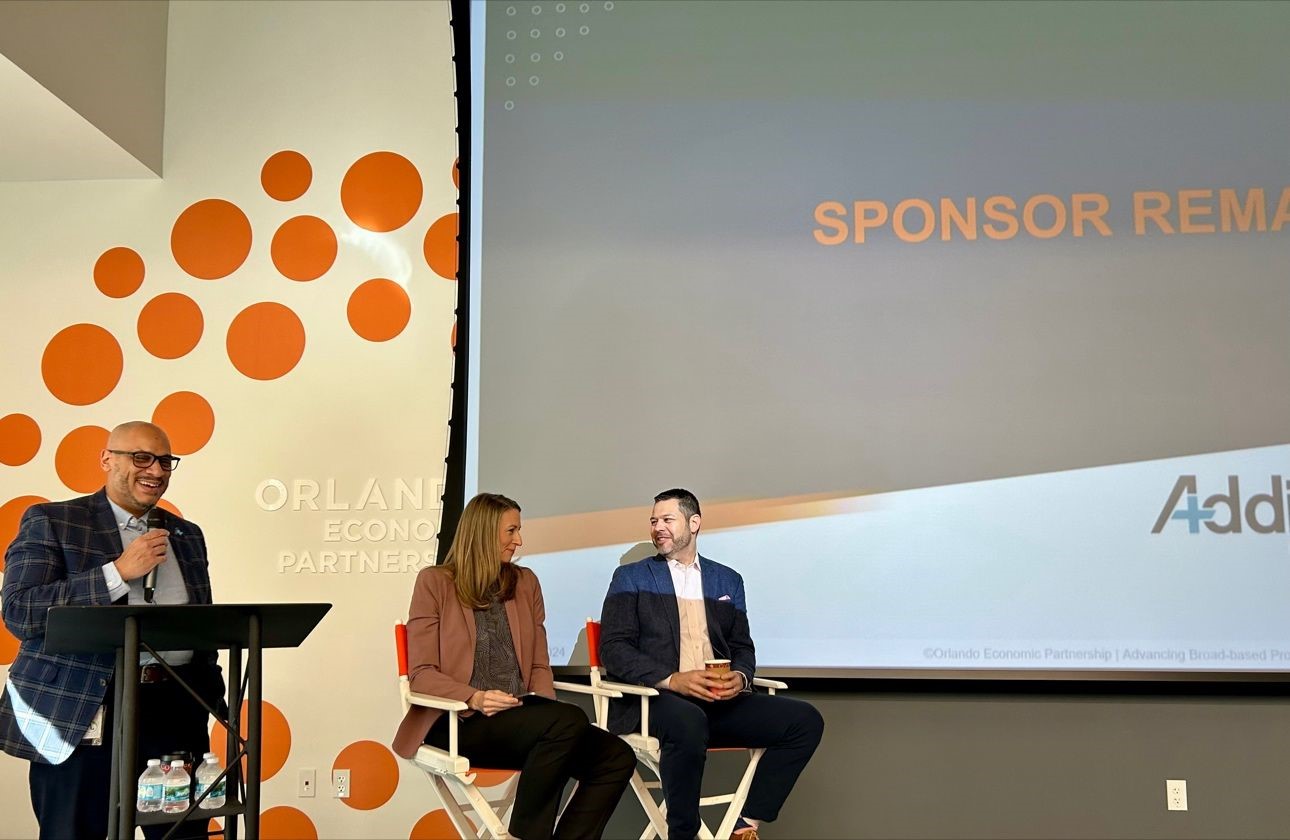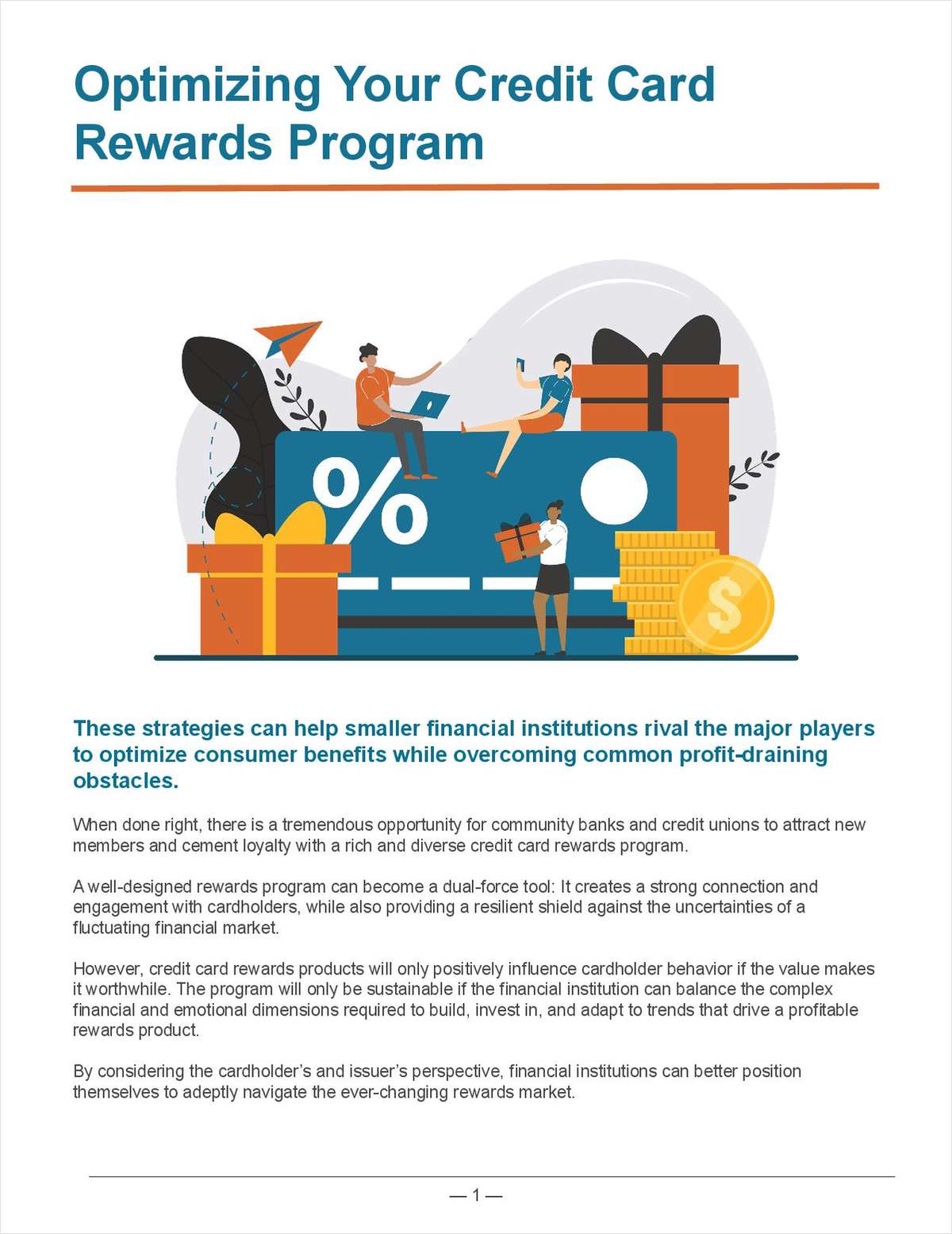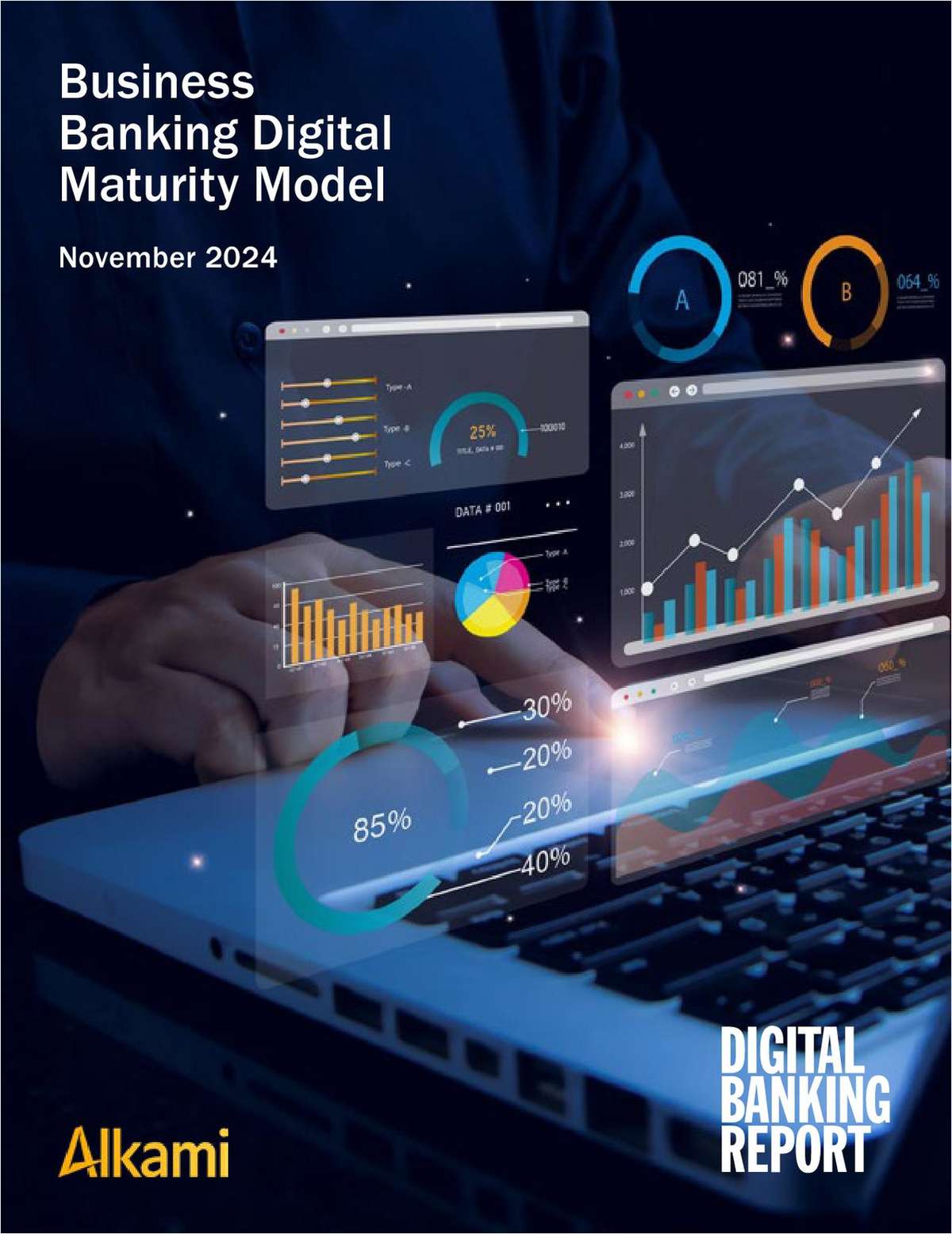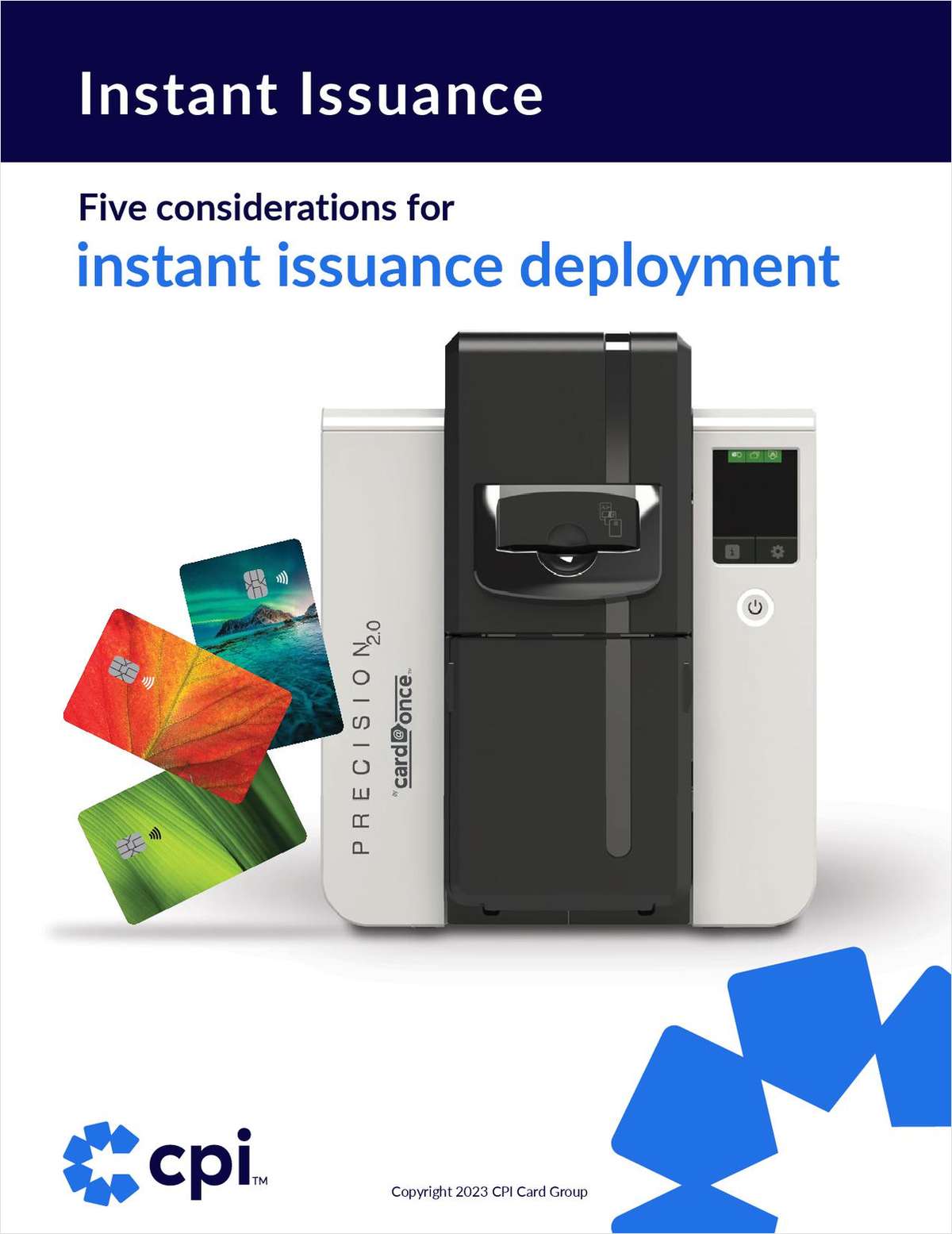Sliver-thin interest margins, reduced consumer demand for loans, the looming slash in interchange income and paltry returns on their own investments have combined to make credit unions search for noninterest income in serious earnest.
Strategies for doing that abound. For instance, the $500 million U.S. Senate Federal Credit Union in Alexandria, Va., began buying member business loans just more than six months ago and has since added more than $10 million at a return of more than 6%, said John Hayes, the 32,000-member credit union's executive vice president and chief operations officer.
Credit unions, of course, have a 12.25% of assets cap to contend with, so to spread the risk and the wealth, U.S. Senate FCU set up a CUSO called CU Strategic Services that now has four other credit unions participating since it began operations last September.
“What's the definition of insanity? Doing the same thing over and over again and expecting different results. We had been trying to figure out a way to increase our own lending with promotions for auto loans, home equity and mortgages but, especially after the economy turned, we knew we had to do something different,” Hayes said.
Working with commercial borrowers–primarily small real estate investors whose needs weren't enough to interest bigger banks–and buying and sharing participations and loan risk has generated not only $10 million so far for his own credit union but $4 million for his CUSO clients, Hayes said.
That hasn't come without challenges. Hayes noted, for instance, that core processing systems designed for the bread-and-butter business of credit unions aren't necessarily equipped to handle complicated business cash management needs.
But there are also new opportunities for fees in that management process, he added. “Banks charge businesses for a lot of things, like checks deposited and withdrawals made and analysis services and just a whole plethora of things,” Hayes said. “Why shouldn't credit unions charge for those, too? Just charge less than the banks do and you can still make money on it.”
Individual consumers are also being targeted as potential payers of fees for high-value services, and technology vendors are getting into the fray by creating the tools to make that happen.
“Our game plan is to introduce new for-fee products that are not yet threatened by the economy, regulators or ubiquitous market availability,” said Robert Broadwell, general manager of PM Systems in Chapin, S.C., a provider of online banking and security solutions to about 200 credit unions.
“Expedited payments are a good example of something for credit unions to offer to members who need a speedy way to make a payment to a mortgage company or other creditor,” Broadwell said, noting that some credit unions charge up to $15 a pop for that service.
He said person-to-person and institution-to-institution transfers are also potential fee generators.
“The success of any of these new revenue-generating products depends largely on product marketing,” Broadwell said. “We're working on launch-ready campaigns that credit unions can deploy in conjunction with these services.”
Value-added card and other affiliation products are seeing renewed interest, according to the big providers as well.
Rewarding members for “profitable behaviors is nothing new really,” said Todd Werner, group vice president at Affinion Benefits Group LLC, a provider of customer engagement and noninterest income to more than 5,500 credit unions and banks.
“We've been doing that for 35 years,” Werner said. “The difference now is the changing landscape, especially on the regulatory side. And credit unions don't want to do what the larger banks are doing today, just going out and requiring customers to do certain transactions and maintain certain balances to avoid fees.”
He said his company's FLEX Checking program is intended as an alternative to that, by providing benefits to checking account holders that offset or “earn down” fees, such as credits for signature-based debit transactions, signing up for online bill pay, enrolling in direct deposit and maintaining certain daily balances.
“We're now supplementing those with other services such as identity theft protection, credit reports, retail savings and travel discounts,” Werner said. “The model has been around for a long time but what we're hearing from credit unions and banks today is that the pressure is really on to make up the lost revenue now because of the interest rate environment.”
Eric Hansing, director of product marketing for CUNA Mutual Group's MemberCONNECT insurance sales and support program, said interest in his company's noninterest revenue channels for credit unions also has been intensifying.
“I think that will continue,” he said, citing the value add of deeper member relationships and retention as well as income opportunities. He said programs like his tend to rank fifth or sixth in terms of how much noninterest products generate at the typical credit union but that such income can be grown each year, especially now that debit interchange fees are set to be slashed by Congress.
The interchange change itself already has prompted some banks to consider imposing fees on checking accounts and debit cards or eliminating rewards programs, and one industry analyst is advising credit unions and banks to consider using prepaid debit cards to make up as much as 20% of that lost interchange revenue.
“Based on our analysis of consumers' use of payment cards, Aite Group believes that banks can recoup a significant percentage of anticipated lost debit interchange revenue by marketing prepaid cards (which carry a higher interchange rate than the proposed rules on debit cards will allow) and can do so without levying fees on checking accounts or debit card use,” the think firm's Ron Shevlin said in a new report.
Shevlin based his assumption on research that shows prepaid card use growing among Gen Xers and Gen Yers and that the notion that only poorer consumers use the cards is outdated.
He said 30% to 40% of those middle and younger age groups used such cards in the last quarter of 2010. “These aren't underbanked consumers,” Shevlin said. Many use the cards to help balance budgets, he said, and the cards have the added advantage of creating a relationship that might not otherwise exist with consumers who “represent a disproportionately high percentage of the demand for new banking products.”
Speaking of new banking products, Fiserv Inc. said it now is seeing interest in deposit-based short-term loans that banks and credit unions can provide consumers. The service allows the consumer to borrow up to a predetermined limit–$300 to $500, for example–by simply texting the request or making it online. The money then is paid back automatically through near-term future deposits, particularly paychecks.
Fees generally can be $7.50 to $10 per hundred, “which sounds high but not compared to overdraft charges of $30 to $39,” said Brian Boardman, consulting director for Fiserv's Revenue Enhancement Solutions Group.
Boardman said the FDIC conducted a recent call to provide guidance on this type of loan that he thinks the NCUA will follow suit. “It's very controlled. It's not based on credit ratings, but it's also not like a payday lender where the loans just go on and on,” he said.
“Only a handful of banks are currently doing these, but we at Fiserv are in conversation with a number of banks and credit unions about it because managing it does take technology that we happen to have,” Boardman said.
All these products and services, of course, don't rely on the traditional interest spread between savings and loans for credit unions to make a buck, but if interest rates return to historical norms, so much the better, one industry participant said.
Complete your profile to continue reading and get FREE access to CUTimes.com, part of your ALM digital membership.
Your access to unlimited CUTimes.com content isn’t changing.
Once you are an ALM digital member, you’ll receive:
- Breaking credit union news and analysis, on-site and via our newsletters and custom alerts
- Weekly Shared Accounts podcast featuring exclusive interviews with industry leaders
- Educational webcasts, white papers, and ebooks from industry thought leaders
- Critical coverage of the commercial real estate and financial advisory markets on our other ALM sites, GlobeSt.com and ThinkAdvisor.com
Already have an account? Sign In Now
© 2025 ALM Global, LLC, All Rights Reserved. Request academic re-use from www.copyright.com. All other uses, submit a request to [email protected]. For more information visit Asset & Logo Licensing.









